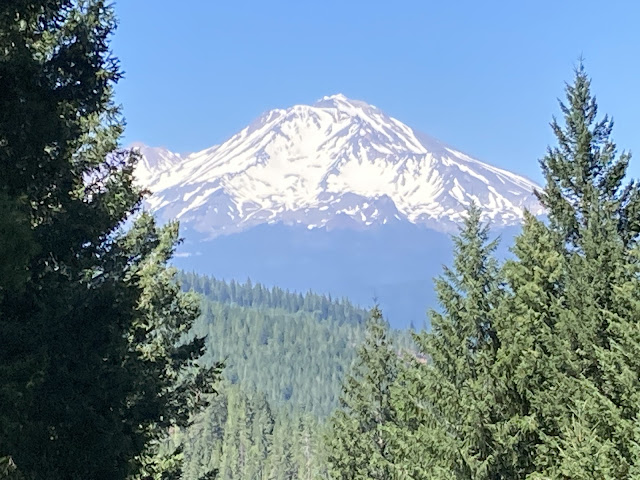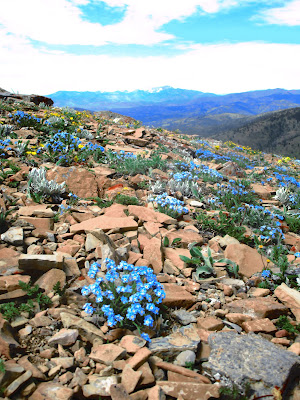 |
| The Mission Mountains Wilderness boundary sign, accompanying Katie on her backpack |
 |
| Katie and her girlfriends at Crescent Lake in the Missions |
 |
| The Donnie Kotynski family from Crown Point, IN. From left: Caleb, Carson, Shannon, Sam, Donnie and A.J. Smith |
 |
| I made it to Grinnell Glacier |
 |
| Grinnell Lake is a breathtaking sight |
We had a wonderful visit from a Chicago-area nephew, his wife and four boys who experienced Montana and Alberta Rockies for the first time.
For us, the highlight of the trip was a hike to Grinnell Glacier in Glacier Park.
For them, they were on their own for the Waterton Crypt Lake hike.
The weather here has turned brutally hot, but the mountain air was a bit cooler and manageable.
It had been about 9 years since I had done Grinnell.
The trail had been opened only one day before we did our hike this year and waterfalls were spilling in all directions. One came down directly over the trail, drenching us coming and going.
I don't know that I ever appreciated this Grinnell hike as much.
Glacier, as expected, was full of people and the trail to Grinnell was crowded, particularly when folks who took the Lake Josephine boat emptied for the shortened hike.
We hiked to and from the glacier from the Many Glacier hotel, more than 11 miles and 2,000 feet in elevation gain and loss.
We were lucky enough to draw permit.
We've found Two Medicine fills up and is closed early most days because the folks hoping to do Going to the Sun Highway from West Glacier don't have permits and opt from Two Med instead.
Many Glacier's crowds made the area feel frenzied.
By comparison, Waterton had a relaxed vibe, and we enjoyed the big lake, the lodge, and business district, Lake Linnett, and Red Rocks.
We stayed in nearby Mountain View at a bed and breakfast connected to the country store/gas station.
We had meals at Kilmorey Lodge and the Prince of Wales, which we found expensive.
We thoroughly enjoyed my nephew, his wife and children, who took to the mountains like they had lived here all their lives.
After a return to Great Falls, I took Katie to the Mission Mountains Wilderness Area, where she planned a backpack and friends. I walked into Crescent Lake with them and turned around and came out. That night I headed to Cut Bank, where my nephew was staying at a nice farm house/bed and breakfast in an isolated wheat field 12 miles out of town.
It was so pleasant there that I spent the night in tent, enjoying the summer breezes, rather than sleeping in the house.
I think the family enjoyed the splendor of the prairie as much as the mountains, a fitting end to their trip.
















































